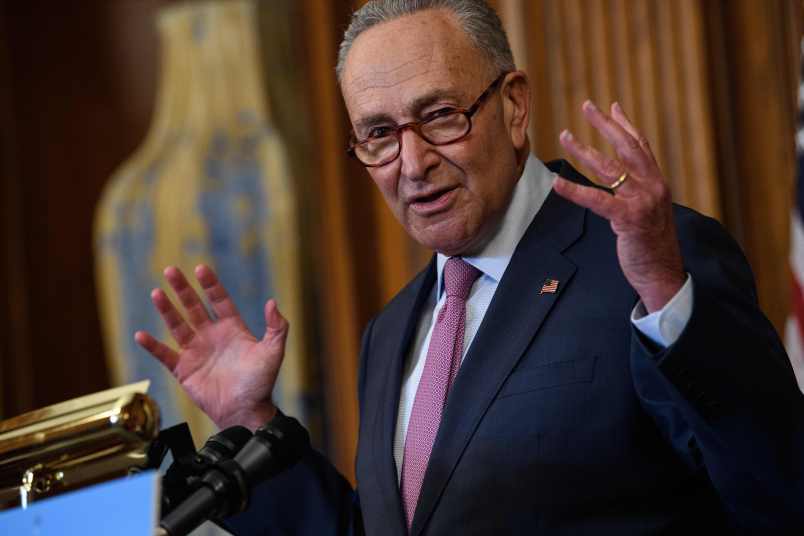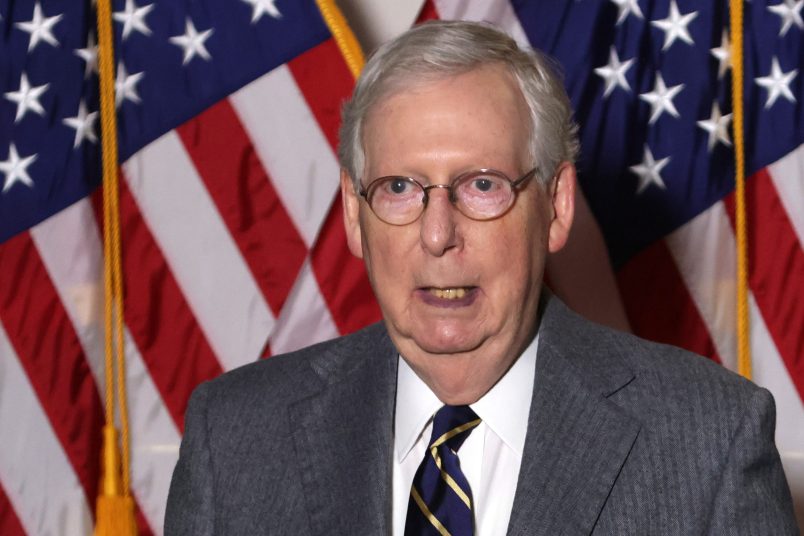With reports of former Sen. Ted Stevens (R-AK) being involved in a plane crash in Alaska, it should be noted that there have been many high-profile plane crashes in American politics. Let’s take a look.
Ted Kennedy and Birch Bayh, Massachusetts, 1964
On June 19, 1964, Sen. Ted Kennedy (D-MA) and Sen. Birch Bayh (D-IN), were badly injured in a plane crash on the way to the Massachusetts Democratic Party convention. The two survived, but Kennedy aide Edward Moss and the pilot were both killed.
Hale Boggs and Nick Begich, Alaska, 1972
On October 16, 1972, House Majority Leader Hale Boggs (D-LA) was campaigning with first-term Democratic Rep. Nick Begich (D-AK) when their plane disappeared in the mountains en route to a fundraiser in Juneau.
Having not been legally declared dead yet, Begich was re-elected in November 1972, against Republican nominee Don Young. The special election in early 1973 to replace Begich was then won by Young, who has held the seat ever since. Begich’s son, Democrat Mark Begich, would later serve as Mayor of Anchorage and is now Alaska’s junior Senator, having narrowly defeated Stevens in 2008. Boggs was succeeded by his widow, Democrat Lindy Boggs, the first woman elected to Congress from Louisiana, who held the seat until her retirement at the 1990 election.
Jerry Litton, Missouri, 1976
On August 3, 1976, Rep. Jerry Litton (D-MO), his wife and their children were killed in a plane crash, on the way to a victory party to celebrate Litton’s win in the Democratic primary for Senate.
The state Democratic Party then selected Warren Hearnes, who had come in second place in that primary. Hearnes then went on to lose the general election against Republican John Danforth, who held the seat until his retirement in 1994.
Richard Obenshain, Virginia, 1978
On August 2, 1978, former Virginia GOP chairman Richard Obenshain, then the Republican nominee for Senate, was killed in a light plane crash. The party then replaced him as nominee with former Secretary of the Navy John Warner, who had previously been one of Obenshain’s rivals at the state Republican nomination convention. Warner won the election, and held the seat until his retirement in 2008. (From the Washington Post, via Nexis.)
Ted Stevens and Ann Stevens, Alaska, 1978
On December 4, 1978, Ted Stevens and his wife Ann Stevens were involved in a plane crash, resulting in Ann’s death while Ted survived. Stevens is known to have blamed the Carter administration and especially his then co-Senator, Democrat Mike Gravel, believing that he and Ann would never have been on the plane if not for Gravel’s blocking of a bill to resolve a dispute with the Carter administration over public land use in Alaska.
John Heinz, Pennsylvania, 1991
On April 4, 1991, Sen. John Heinz (R-PA) died when his chartered plane’s landing gear malfunctioned, and the plane then collided with a helicopter that had been sent to investigate the situation. The burning wreckage then fell on the grounds of an elementary school in Lower Merion Township, a suburb of Philadelphia. Seven people were killed in total: Heinz, the two pilots on the plane, the two pilots on the helicopter — and two schoolchildren who had been playing at noon recess in the yard below.
Gov. Bob Casey (D-PA), the father of current Democratic U.S. Sen. Bob Casey, appointed Democrat Harris Wofford to the seat. Wofford then won a special election for the seat that November, against Republican former governor and former U.S. Attorney General Dick Thornburgh, but then later lost re-election against Republican Rick Santorum in 1994. Heinz’s widow, Teresa Heinz, later married Democratic Sen. John Kerry of Massachusetts.
John Tower, Georgia, 1991
On April 5, 1991, the day after the plane crash in Pennsylvania that killed Heinz, former Sen. John Tower (R-TX) died in a commuter plane crash in Georgia that killed all 23 people on board. Tower had been traveling with his grown daughter Marian, also killed on the flight, on a trip to promote his new book.
Tower had first been elected to the Senate in a 1961 special election, to succeed Democratic Vice President Lyndon Johnson, becoming the first Republican elected to the Senate from Texas since Reconstruction. He then held the seat until his retirement at the 1984 election. He had been nominated by President George H.W. Bush to serve as Secretary of Defense, but his nomination was rejected by the Senate in a bruising confirmation battle. Following the failure of Tower’s nomination, Bush then selected someone else to serve at the Pentagon: Dick Cheney, who eventually parlayed that position into an oil career and becoming Vice President under George W. Bush.
Ron Brown, Croatia, 1996
On April 3, 1996, Secretary of Commerce Ron Brown and more than 30 other people were killed when their plane crashed in rocky terrain. Brown, a former chairman of the Democratic National Committee, had been visiting the country as part of a trade mission.
Mel Carnahan, Missouri, 2000
On October 16, 2000, Gov. Mel Carnahan (D-MO) died in a plane crash, during a hotly-contested Senate race against incumbent Republican Sen. John Ashcroft. Carnahan’s name could not be taken off the ballot at that juncture.
However, Democrats continued to campaign against Ashcroft, informing voters that Carnahan’s widow, Jean Carnahan, would be appointed to the vacancy if Mel Carnahan won the election. Mel Carnahan then became the only person to posthumously win a Senate election, defeating Ashcroft by 50%-48%. (As a matter of precedent, posthumous elections have occurred on numerous occasions throughout American history for the House, but never before had it taken place in the Senate.)
Ashcroft went on to be appointed Attorney General during the first term of President George W. Bush. Sen. Jean Carnahan (D-MO) was narrowly defeated in the 2002 special Senate election against Republican Jim Talent, who in turn lost re-election in 2006 to Democrat Claire McCaskill.
Paul Wellstone, Minnesota, 2002
On October 25, 2002, Sen. Paul Wellstone (D-MN), his wife Sheila and their grown daughter Marcia were killed in a plane crash as they were traveling to northern Minnesota for a funeral of the father of a Dem state legislator. The crash occurred only a a week and a half before the election, in which Wellstone had been in a hard-fought race with Republican Norm Coleman.
Wellstone was replaced as the Democratic nominee by former Vice President Walter Mondale, who had also previously held the same Senate seat. Coleman narrowly won the election — aided by conservative attacks on political content in the public memorial service held for Wellstone, as well as the overall Republican tide that year.
A very significant long-run consequence of Wellstone’s death and Coleman’s victory was the political rise of comedian and Democratic activist Al Franken, who had been a friend and supporter of Wellstone’s. Franken discussed his friendship with Wellstone and his own side of the story about the memorial service in his hit 2003 book, Lies And The Lying Liars Who Tell Them. Franken went on to become the Democratic candidate against Coleman in 2008, narrowly winning a race that involved a recount and extensive litigation. While the litigation was going on, Franken addressed a Dem event and discussed the major victories for the party in 2008: “And yes — we took Paul Wellstone’s seat back.”
This post has been added to since it was first published.









